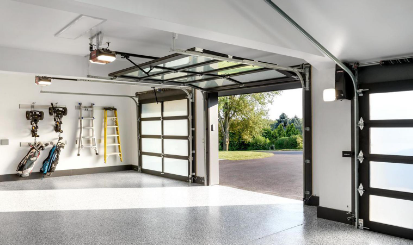
Transform Your Garage with Concrete Flooring: The Practical and Stylish Choice for Your Home
Your garage is a crucial part of your home, providing storage space, workshop areas, and vehicle shelter. The flooring of your garage is an essential aspect that can influence the space’s functionality, durability, and aesthetics. Concrete is popular for garage floors due to its resilience, low maintenance, and affordability. In this article, we’ll explore the ins and outs of garage concrete floors, including the installation process, maintenance tips, and common problems you may encounter.
Benefits
Garage concrete floors have many advantages, making them a top choice for homeowners. Concrete is exceptionally durable and can withstand the weight of heavy equipment and vehicles. Unlike other flooring materials, concrete does not require regular cleaning or special maintenance, making it a convenient and practical option. In addition, concrete is a cost-effective choice, which can save you money in the long run. Concrete floors can also be customized to fit your style and preferences, with options for colors, textures, and patterns.
Preparation
Before installing concrete flooring in your garage, preparing the space properly is crucial:
You must clear the garage and remove any objects, equipment, or debris.
Check the floor level and use a self-leveling compound to fix any unevenness.
Clean the floor thoroughly, removing any dust, grime, or oil stains.
Allow plenty of time for the floor to dry completely before pouring the concrete.
Installation
Installing concrete garage floors is a complex process requiring attention to detail, patience, and skill. There are some ways to do it by hand, but you can also find some easy ways to screed concrete. Here are the main steps involved in installing concrete garage floors:
Preparation of the surface:
The first step in installing concrete garage floors is to prepare the surface. The garage floor must be cleaned thoroughly to remove debris, dust, or dirt. Power washing the surface is a great way to ensure cleanliness. It is also important to check the level of the floor and use a self-leveling compound to fix any unevenness. This will ensure the surface is flat and level, which is crucial for a smooth installation.
Pouring the concrete:
Once the surface is prepped and ready, it’s time to pour the concrete. You may want to buy a power screed to ensure the concrete floor is level and even. A power screed is a tool that uses a vibrating blade to level the concrete quickly and efficiently. It can be especially useful for larger areas, as it can cover a large surface area in a short amount of time. You can also use a hand-held screed or a trowel to spread the concrete evenly.
Adding texture to the surface:
After the concrete is spread, you can add a non-slip texture to the surface. This can be done using a broom or roller to create a texture that will prevent slipping and sliding. You can also add color to the concrete to customize the look of your garage floor.
Curing the concrete:
Once the concrete is poured, it must cure properly to ensure that it sets properly and has the necessary strength. The curing time will depend on the type of concrete and the weather conditions, but typically it will take several days for the concrete to cure completely. You should cover the surface with plastic or other protective material to keep it moist and prevent it from drying too quickly.
Sealing the surface:
Once the concrete has cured, you can add a sealer to the surface. A sealer will protect the surface from damage and make cleaning easier. You can choose from various sealers, including acrylic, epoxy, or polyurethane. Choosing a sealer appropriate for the type of concrete and the conditions in your garage is important.
Maintenance
Concrete garage floors are relatively low-maintenance and easy to clean. You can use a broom, mop, or pressure washer to clean the surface. To prevent moisture from seeping into the concrete, seal any cracks or gaps in the surface. Applying a sealer every few years can protect the surface from stains and damage. If your garage floor is worn and torn, you can repair small cracks using a patching compound.
Common Problems with Concrete Garage Floors
One of the most common problems with concrete garage floors is cracking. Cracks can be caused by shifting soil, heavy loads, or temperature changes. Stains from oil and other substances can also mar the surface of the floor. Moisture can seep into the concrete, causing damage over time if the garage is not properly sealed. To prevent these problems, keep your garage clean, dry, and well-ventilated. If you notice any cracks or damage, repair them immediately to prevent further damage.
Conclusion
Installing concrete garage floors is a challenging but rewarding process that can transform your garage into a functional and stylish space. Following the proper steps and using the right tools ensures that your garage floor is level, strong, and durable. With a little bit of effort, you can have a garage floor that is both functional and attractive and that will serve your needs for years to come. Don’t let common problems like cracking, staining, or moisture affect the quality of your garage floor. Instead, take the time to properly prepare, install, and maintain your garage floor, and enjoy a beautiful and functional space that fits your style and serves your needs.







